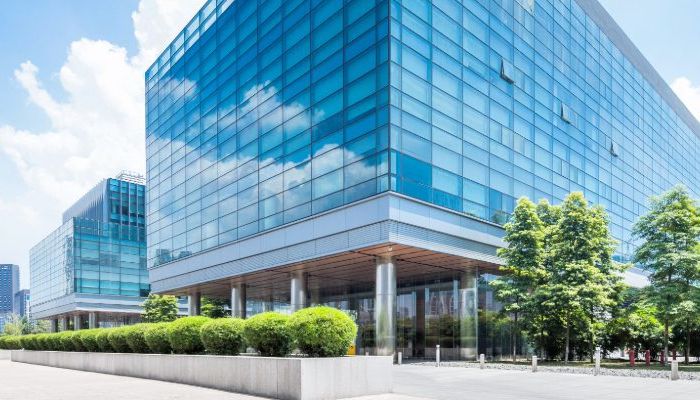What is Move Management?
Part 2: Technology to Improve Your Organizations Move Management Process
In my first post, “What is Move Management Part 1: How you can better understand your move management process” I talked about what move management is and discussed how the first step in understanding your organizations move management process is to truly understand what your churn rate is–and then getting it under control.
In this post, I will talk about how there are many different methods to managing your move process–from manually tracking each and every move to having a point solution or a full blow facility management platform. Moves involve a lot of people and require a significant amount of communication between involved parties. This is where technology can play a vital role. Below, I will discuss the benefits for each way and how you can find the right method that works best for you and matches the business goals and objectives of your organization.
Manual
 Believe it or not a lot of people are still managing their move process manually. They may using printed drawings and spreadsheets, using coloring pencils and pens and taking clipboards with printed out floor plans to where the move is actually occurring to try and manage their move process. This move type method is best for one-off moves within a single department. For organizations who do several hundred moves per month, this is not the most efficient way to manage your move process. Say you are doing 1,000 moves a month–if you are manually managing these moves, you are likely working about 6-7 days a week and about 16-20 hours a day in order to complete the move on time. This type of process is not scalable and it is very difficult and time-consuming to do, but people still manage their move process this way.
Believe it or not a lot of people are still managing their move process manually. They may using printed drawings and spreadsheets, using coloring pencils and pens and taking clipboards with printed out floor plans to where the move is actually occurring to try and manage their move process. This move type method is best for one-off moves within a single department. For organizations who do several hundred moves per month, this is not the most efficient way to manage your move process. Say you are doing 1,000 moves a month–if you are manually managing these moves, you are likely working about 6-7 days a week and about 16-20 hours a day in order to complete the move on time. This type of process is not scalable and it is very difficult and time-consuming to do, but people still manage their move process this way.
CAD & Spreadsheets
Using CAD & Spreadsheets is a little more efficient than the manual management of your move process. These are really stand-alone solutions, where you have a floor plan of your facilities with employees names but it can be very difficult to maintain and update the information. Someone might also be managing moves in an Excel spreadsheet, indicating that a person is moving from one location to another. Each time they get a notification or move request, that individual has to update this information which can be extremely time consuming and error prone. Both of these methods are not scalable and are only one-off solutions, they don’t provide you with visibility into what space you have, reporting or notifications. Individuals who manage their moves with CAD & spreadsheets typically put this information on a shared drive, but not everyone has access to this information in a real-time collaborative way. These types of move processes are not designed for managing your moves in an efficient and timely manner.
CAFM or Move Point Solutions
Some organizations use a Computer-Aided Facility Management (CAFM) system or a move point solution to manage their move process, but these are typically only used at the department level, not enterprise-wide. They are smaller technology and can be desktop solutions, not an enterprise Integrated Workplace Management System (IWMS) platform. These types of solutions can do an effective job of managing a few moves within smaller departments, not for organizations who are managing several hundred moves per month. They are considered a point solution, meaning they are just meant for move management and won’t be tied to your golden source of space data or your physical space inventory. They also won’t be tied to any other solutions you have in place, for instance your maintenance management solution, where you could do task management or submit a work order and have the two solutions work seamlessly together. CAFM or move point solutions are typically not designed for mass collaboration within an organization.
IWMS
If you are doing hundreds or thousands of moves per month I recommend using an Integrated Workplace Management System (IWMS). Unfortunately the manual methods that a lot of organizations use can lend themselves to miscommunications or scheduling errors which can lead to time-consuming problematic moves. An IWMS can automate your move management process and keep the lines of communications open with everyone who is involved in the move process. An automated approach can also reduce the cost associated with moves and allow you to track your performance–costs include time spent planning, coordinating and executing the move, employee downtime and errors and miscommunication that can occur with manual process. An IWMS platform can automate and help that innovative facility manager solve the problem, reduce costs and downturn from churn, and create a better work environment for their employees. An IWMS allows you to get your employees moved happily, effectively and as quickly and easily as possible.

Part 3: Move Management Best Practices
Now that I’ve discussed the different types of technology that can be used to manage your organizations move management program, next I will dive into Move Management best practices. It is critical to understand your organizations move program as it is a critical component of effective facility management practices.
Stay tuned for my next post on Move Management Best Practices!










